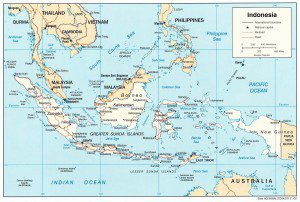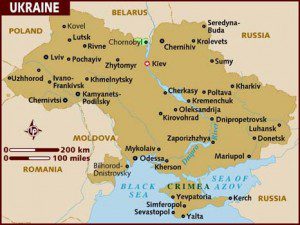I have been posting recently about how societies and groups construct their memories, and through that process, define their identities. When I say “constructing,” that need have no implication of deceit or forgery: rather, it means that multiple memories are available, and we choose to emphasize some rather than others. History is always being rewritten, and always will be. That story is particularly relevant for religions and religious traditions, which try to root themselves in antiquity. A large amount of scholarship on ancient Israel is devoted to showing how the people constructed their identity, and wrote their history accordingly. (I should add here that I am not a Biblical minimalist: I have no problem in accepting that Solomon and David really existed, and were mighty kings in their day).
I’ve used that theme of memory and identity in a couple of courses I have taught in recent years. Some books in particular have proved really useful to me, and I pass on the recommendations. Although they focus on certain times and places, a lot of the lessons they offer are much more widely applicable, especially in religious contexts.
The classic author in these matters is Benedict Anderson, author of the immensely influential 1983 book Imagined Communities. I have also taught with some of his later books, especially The Spectre of Comparisons and Under Three Flags.
Anderson describes how groups of people imagine themselves into nations, and then come to believe that such organizations have existed into the immemorial past. Though based on his observations of fairly recent national entities such as Indonesia, his point is that the same processes are true everywhere, even of such seemingly eternal structures as France. Those communities do not necessarily have any natural homogeneity, but once they have created this national identity, they are prepared to kill and die for it. In 1861, shortly after Italian unification, Massimo d’Azeglio pronounced that “We have made Italy. Now we have to make Italians.” Anderson’s work describes how nations “make” their citizens, and how those citizens come to believe they have always had that identity.
Just to take an example, the nation of Indonesia was newborn in 1949, when it replaced the older colony of the Dutch East Indies. Soon, though, scholars were writing books on the History of Indonesia, taking their narrative up from prehistory and medieval times, when no such concept as “Indonesia” existed. The reason is simple enough, in that nobody wants to publish a book called A History of Those Islands and Regions of the Pacific That in 1949 Would Become Part of the Nation Called Indonesia. But the result is that both the writers and their readers are acting as if this region was always destined to be Indonesia, presumably from the time the Earth cooled. A very modern nation has acquired an eternal past.
Similar objections would apply to subsuming colonial American history – even Spanish colonial history – under the rubric of a History of the United States. And yes, I’ve done that myself!
In the modern age, Anderson sees the work of imagining as a by-product of “print capitalism,” the decision by entrepreneurs to print books in the vernacular to reach the broadest possible markets. Language and nationality grew together. I would also place much more stress here on the role of religion and chiefly Protestantism, which first formulated the ideology that allowed and demanded the mass printing of books in the vernacular. In the English context, the Reformation also meant that the emerging nation always had a deadly external enemy against which it could define itself and its values, namely Roman Catholicism. (I’m drawing there on the famous work of Linda Colley).
Anderson also shows how other objects and symbols contribute to creating national identity in modern times, including the census, newspapers, national flags, voting, and maps. Much of Anderson’s work concerns the growth of academic/bureaucratic categories, and how these empty concepts shape and transform millions of lives. To see a magnificent parody of these categories, and just how absurd they can appear once we defamiliarize ourselves with them, look at Jorge Luis Borges’ famous classification of animals, supposedly drawn from an “ancient Chinese encyclopedia.” You’ll never look at a list in the same way again.
Another book I found valuable in teaching was Kate Brown’s excellent A Biography of No Place (2005). Benedict Anderson famously described how communities imagine themselves, how a patch of land becomes France or Indonesia, rather than any other concept. Often, these secular territories replace older sacred landscapes – look for instance at the Four Corners country in the US, and how the four states divide up an ancient sacred landscape that was once unified. Kate Brown does something much more radical, in taking a territory that has no such clear identity, one that is pure borderland: “Her ‘no place’ is left-bank Ukraine, the borderland between shifting Polish-Lithuanian and Russian empires — the wedge of land made notorious by Chernobyl and its cloud.” She shows the different frames that can be placed upon this territory.
Today, this area is part of the nation called Ukraine, but things could easily have developed differently. “Today’s independent Ukraine is a creation in which the streamlining of hybrid identities into national groups, the deportation of people as national minorities, the Nazi imposition of racial hierarchies, the Holocaust, the Soviet annexation of Polish territory, and the Polish and Soviet population transfers all played major roles in creating unambiguously Ukrainian nation-space.”
Perhaps the most striking thing about the book is the lack of national identity in earlier eras. If you asked people in the region what they were, they would answer in terms of their village, or their clan, or their religion. For modern minds, it seems incomprehensible that pre-twentieth century inhabitants should have been so unconcerned with their nationality. They must have been something? In fact, these world-views seem quite difficult for us to understand. They “made up a continuum of cultures that stood literally and figuratively on the border between Poland, Ukraine, and Russia, in a place where mass media had not yet standardized vernaculars, or made boilerplates of ritual and tradition.”
The book’s central theme is how we determine who we are – or if you like, what masks we wear. Often, our constructions of identity seem fundamental and never-changing, whereas in fact they can change radically in a few decades. A hundred years ago, Central and East Europeans defined themselves at least partly by the monarchy to which they swore allegiance. Later, various forms of nationality came to the fore.
And once those national identities are constructed, histories are written to show how things always were as they are at present.














